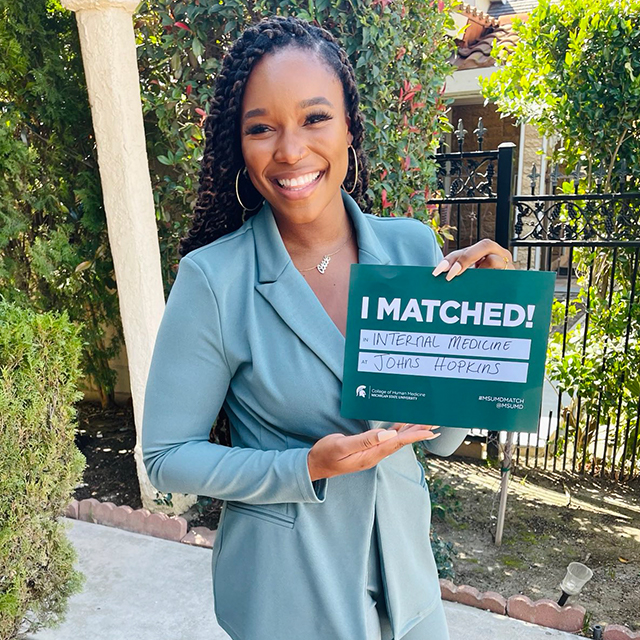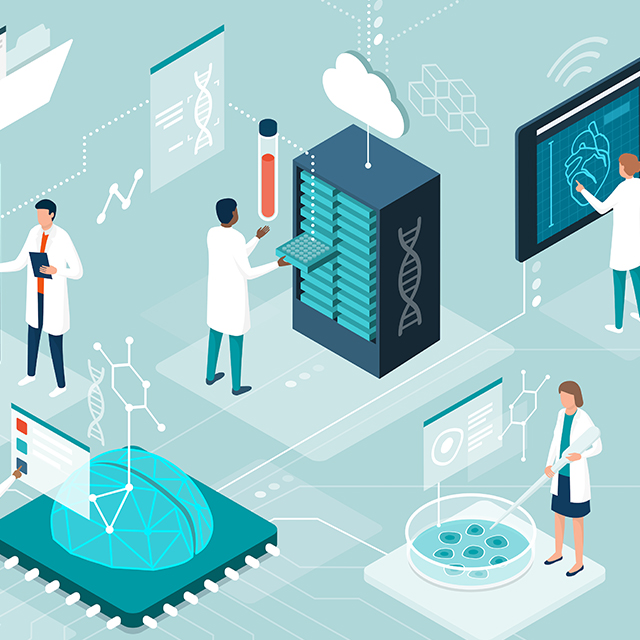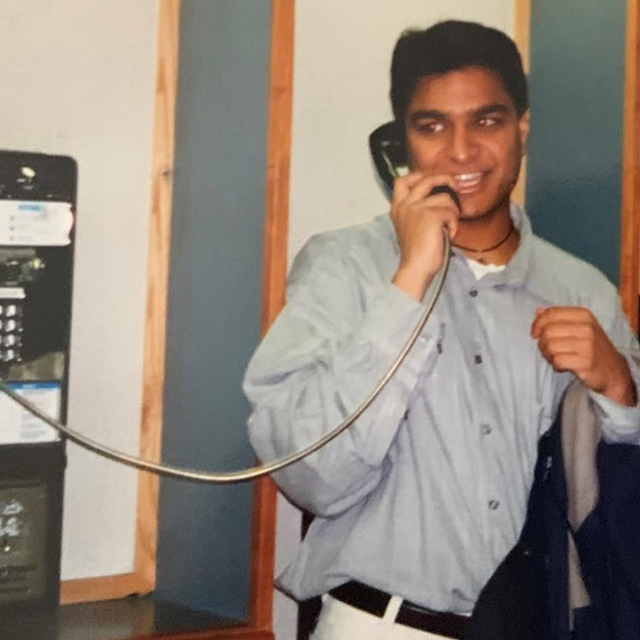Despite starting their Osler residencies about a decade apart, Paul Varghese (Thayer, 1994) and Maulik Majmudar (Longcope, 2005) have a lot in common. Both were fascinated by cardiology, and both went on to high-level careers, advancing the field of health information technology.
Varghese is now head of Health Informatics at Verily (formerly Google Life Sciences), while Majmudar was, until recently, Amazon’s principal medical officer and oversaw the team that developed Amazon Halo, the company’s first wearable health tracker. (See full bios at right on desktop and below article on mobile devices.)
In separate interviews, the two Osler alums recently reflected on their careers in digital health.
What inspired you to choose cardiology as a specialty, followed by digital medicine?
Majmudar: I went to medical school thinking I’d become an ER doc. During medical school, I enjoyed every clinical rotation and clinical specialty. I couldn’t make up my mind. So I started to think about what I really appreciated about medicine, besides the opportunity to connect to people in a meaningful way. That led to a deeper appreciation for physiology, reliance on evidence-based medicine and adoption of innovative technologies. Cardiology was — and continues to be — at the forefront of evidence-based medicine, as well as innovations in diagnostics and therapeutics, such as drug-eluting stents, pacemakers, ventricular assist devices and hand-held ultrasound. After doing a rotation in the cardiac intensive care unit at Hopkins, I was sold. I pursued internal medicine just so I could become a cardiologist. There was no other subspecialty that interested me as much as cardiovascular medicine did.
Varghese: For me, being a clinician was such a privilege — playing a part in a great moment of vulnerability for patients and understanding something more than the nuts and bolts of medicine. But what I’m really good at is applying clinical knowledge to build information systems to help people make better decisions. The tradeoff is that I’m missing a lot of intense medical interactions. But I can build systems to touch people and help them take better care of themselves on a larger scale. That’s the promise of using infrastructure to inform peoples’ lives in meaningful ways.
My path to digital medicine was inadvertent: While in clinical practice, I had the opportunity to deploy a cardiovascular information system and saw firsthand the effect of using data at scale to improve both clinical, quality and operational outcomes. This led to an opportunity to work in the health information technology industry.
How did the residency inform you, and who were your role models?
Majmudar: There are many role models and individuals who have shaped me in different aspects of my personal and professional life. To take an analogy from sports: I have my teammates, my position coach, my head coach and all the support staff. At Hopkins, there are exceptional people in all those roles who have served as my role models, including nurses. I learned some of the most important life lessons from the nursing staff at Hopkins, including the ability to stand up for yourself. The CCU team, led by Steve Schulman, helped me understand what it truly meant to care for critically ill patients. I have tremendous respect and admiration for my intern-year assistant chief of service, Eric Schmidt, and my program director, Charlie Wiener. They have played an instrumental role in my career.
Varghese: There are so many things from the residency that proved transformative. What stands out immediately includes the high standards of responsibility and expectations placed on Osler residents in leading teams; and the direct access to amazing role models. I like to say I cribbed my leadership style wholesale from Charlie Wiener, Redonda Miller and my CCU attending, Steve Schulman. What I remember from them is that you can be doing very complex and highly critical work, but also make it a really enjoyable, inspiring experience for your team. With reverence, you can do tremendous things — inspire people and be motivated to give more of yourself.
What do you see as digital medicine’s greatest challenges?
Majmudar: The greatest challenge is almost never the technology. Rather, it’s the will to change behaviors or workflows; getting alignment between the various stakeholders; clearly articulating who pays and who benefits (and who loses); and creating the right infrastructure and processes to continually measure impact. The other big challenge is ensuring “techquity” (technology equity). There is a real concern about deploying technological solutions without paying close attention to the needs and capabilities of vulnerable or disadvantaged populations.
Varghese: The first challenge is getting access to health data that is useful in both relevance and volume. Access drives the pace of innovation. For example, a critical part of health data access efforts is respecting privacy and security concerns. De-identification is necessary but can be time- and cost-intensive. The other challenge concerns having the appropriate expertise behind the design and application of digital medicine programs. Medicine is a knowledge-critical field. You can’t expect that “the data will tell us what to do.” Yet another challenge is trying to meet people’s expectations. It’s best to see things on a smaller scale. People can misjudge what digital medicine is good for. It’s not a quick solution to change people’s behavior or larger social determinants of health. But it can help people make better decisions.
What might surprise Osler alumni about your digital medicine work?
Majmudar: I never did a PowerPoint presentation at Amazon! The company has a very strong “narrative” culture. Almost every meeting starts in absolute silence, as all the attendees read a six-page memo prepared by the meeting owner outlining the objectives of the meeting, relevant background, key issues, supporting facts and a recommendation. With regard to Amazon Halo, an interesting aspect is its use of machine learning to analyze energy and positivity in the user’s tone of voice to better understand how they sound to others with the goal of improving communication and relationships. I’ve been working from home with three kids under the age of 4, so I use this feature to gut check that I am not taking any of my stress out on my family or friends.
Varghese: Most of my work is not about the technology and methods (such as machine learning). It’s really about defining the problem being solved, and then figuring out what is the right application of data and technology for a solution. It mirrors all the clinical diagnostic training I learned on the O!
Support the Osler Fund for Scholarship
By investing in the future of our young doctors, we continue the legacy of William Osler to prepare and inspire the next generation of leaders. Your contribution supports educational opportunities for current residents to enhance their training — experiences that might not otherwise be possible. If you are interested in supporting our housestaff, contact Donna Bolin at 410-550-9893 or [email protected]. Thank you for your continued support. To make a gift online, please visit our website at bit.ly/oslerfundforscholarship.



